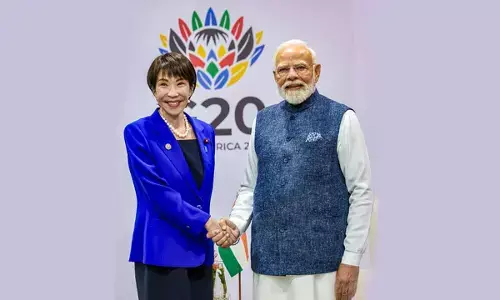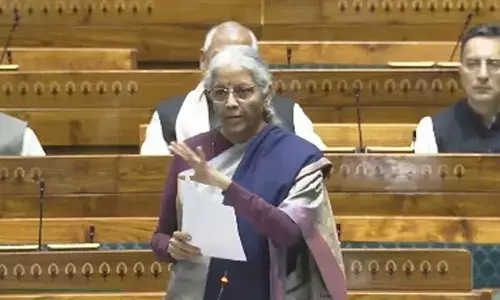Vijayawada: Barricades trigger traffic snarls in Ranigari Thota

Vehicles parked on the road
- Narrow lanes lead to parking problems
- There is no rainwater flooding after Karakatta was constructed
- No management of storm water
Vijayawada: Poor infrastructure facilities, parking problems, traffic woes, rainwater flooding and other issues are causing major problems to the residents Ranigari Thota.
Ranigari Thota is one of the densely populated colonies in Vijayawada city with poor infrastructure facilities. Though the colony was formed over four decades ago, it lacks basic infrastructure facilities. Many residents live in houses built in narrow lanes and they face problems to park their two-wheelers.
Another biggest problem they face is traffic problem. Since the colony is located adjacent to national highway, the residents have to bear with severe traffic problem.
With more chances of accidents occurring, the city police have installed barricades on the road near Ranigari Thota that connects to the national highway. Hence, residents have to go ahead for a few kilometres and take a U turn if they want to go to the colony on national highway. People coming from Krishna Lanka or MG Road have to travel long distance to take U turn. Traffic will be heavy during morning and evening hours on the national highway, making the people panic of mishaps.
Ranigari Thota residents face hardships during rainy season due to flooding. However, construction of Karakatta along Krishna River prevented the colony from flooding. After this construction, the residents are living without fear though flood level crosses seven lakh cusecs in Krishna River.
Due to lack of storm water management, sewage water stagnates in the side drains causing mosquito menace. The colony residents also complain of poor hygienic conditions in the areas adjacent to Krishna River.
The Vijayawada Municipal Corporation is trying to keep the colony clean and sanitation staff collects garbage daily. VMC has constructed schools and Primary Health Centres for the convenience of locals. Also, it laid roads and drinking water pipelines to ensure supply of drinking water two times a day.














